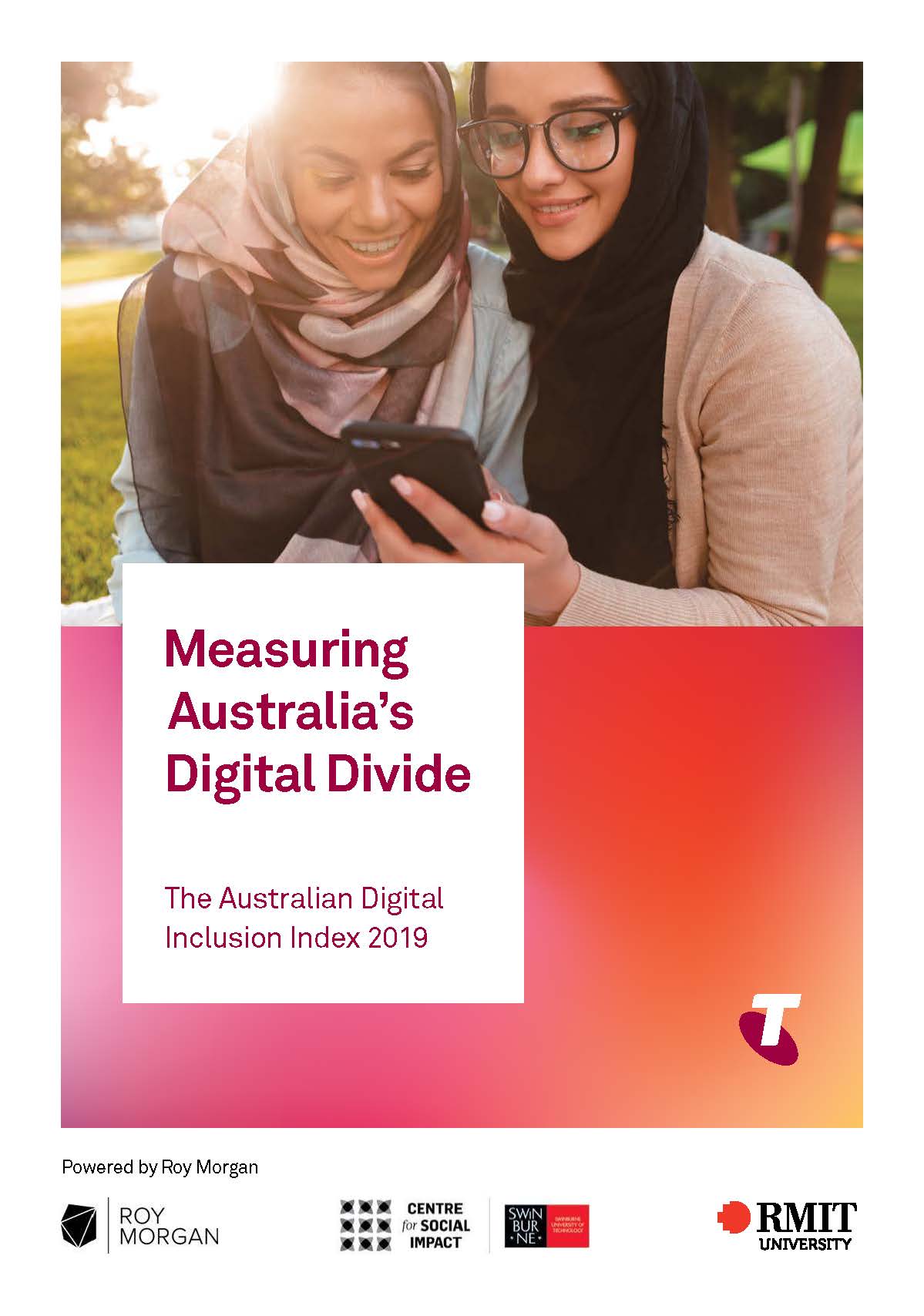This case study was originally published in the 2019 Australian Digital Inclusion Index report, and is derived from the Roy Morgan Single Source dataset. As of 2021, the Australian Digital Inclusion Index is based on the Australian Internet Usage Survey (AIUS). The numerical results of this case study cannot be compared with the refreshed ADII data.
A rapidly growing number of Australians are connecting to the internet through the NBN. As the new network nears completion, the NBN is redrawing the national map of digital inclusion. In recent years, Index results show a significant impact where the network has been completed or nearly completed.
A rapidly growing number of Australians are connecting to the internet through the NBN. As the new network nears completion, the NBN is redrawing the national map of digital inclusion. In recent years, Index results show a significant impact where the network has been completed or nearly completed.
In TAS especially, where the NBN rollout was finished earlier than any other State, the Index reported substantial improvements between 2017 and 2018. In SA, WA and the ACT, where NBN take-up has been substantial in the past year, we have also seen notable improvements in digital inclusion. Furthermore, the priority given to rolling out the NBN in rural areas is reducing some of the digital inclusion disparities between city and country Australians.
What explains this impact? What difference does the NBN make to digital inclusion? Two features of the NBN rollout are important: the infrastructure and the switchover. The obvious change NBN brings is a new network infrastructure. NBN’s current technology mix does not match the original promise of fibre to the home for almost everyone, and recent media reports have highlighted problems with the performance of some services, especially fixed wireless1. However, for most Australians, the NBN represents an improvement on the previous infrastructure available. Faster networks and more connectivity will translate into improved internet services for consumers.
The second critical element is the NBN switchover. NBN does not augment existing fixed broadband services: it replaces them. When the network is built in any given area, users must move to a new plan, even if they continue with their existing provider. Retail service providers want to compete for customers at this switchover point, and a period of active marketing typically occurs, with local advertising, social media, and letterboxing campaigns, and offers on bundled services, such as phone calls and streaming TV. Such campaigns may well attract new or former users, and mobile-only internet users, to fixed services.
We can expect the NBN to improve our measures of Access, because this directly reflects the quality of network infrastructure. However, when the NBN was completed in TAS, we saw results improve across all three dimensions of the Index. This is likely to occur for several reasons. More users combined with more generous data allowances will increase Access scores. More generous data plans means users get more gigabytes for their dollar, improving Affordability scores, even where costs may be the same or higher than a previous plan. If people are using the internet more, including expanding the range of things they do online, this is also likely to increase their scores for Digital Ability.
In TAS, with a relatively small population switching over at around the same time, the across-the-board effects of the NBN were highlighted by a sharp increase in Index results in 2018. Similar effects are appearing elsewhere in Australia, but with a slower rollout they are not as clearly visible in the data.
All this is good news — especially for people who did not previously have an internet connection, and for people who until now have relied entirely on mobile services. But we cannot be sure whether the NBN — at least in its current form —will lead to an ongoing improvement in Australia’s level of digital inclusion, and the larger social and economic benefits that are associated with that. Results in TAS were flat between 2018 and 2019, suggesting that the beneficial impact of the NBN may be mainly a one-off. Significant improvements in Affordability appear unlikely in the absence of any low-cost NBN broadband pricing. Despite the NBN, the Affordability gap between high and low-income households has not significantly changed. Improvements in Digital Ability are likely to depend on additional interventions, such as programs targeted at the needs of particular communities.
The NBN was designed to reduce the digital disadvantage of regional and remote Australia. The Index shows that it has made a positive difference. But the NBN’s long term effects on Australia’s digital inclusion performance are likely to be complex, and its capacity to meet the future data and network requirements will depend on further investment. Under NBN’s technology mix some households received a fibre connection, while others received fixed wireless or copper. We do not yet know how the distribution of the different NBN access technologies maps onto Australia’s existing economic geography, although some early analyses suggest that unequal NBN outcomes may reinforce existing social inequalities2.
Upon completion, the future development of the Australia’s national broadband network is likely to be a major issue for the NBN Co, governments and the communications sector for many years. Policy decisions in this area will have substantial impact on digital inclusion for all Australians.
Further information
For more information, including related data tables and the full citation list, please refer to the 2019 Australian Digital Inclusion Index.
References and footnotes
[1] ABC (2019).
[2] See: Schram et. al. (2017).
Citation
Thomas, J, Barraket, J, Wilson, C, Ewing, S, MacDonald, T, Tucker, J & Rennie, E, 2019, Measuring Australia’s Digital Divide: The Australian Digital Inclusion Index 2019, RMIT University, Melbourne, for Telstra. DOI: www.dx.doi.org/10.25916/5d6478f373869







